With an eye to the future! Optical and optoelectronic devices FSUE "ON Refinery"
MODERN PRODUCTION OF THE ENTERPRISE
Novosibirsk Instrument-Making Plant is one of the leading enterprises in Russia for the production of modern optical-electronic systems for special and civil purposes. For your 105-year-old history The plant has come a long and difficult path from small optical workshops of the Zeiss company in Riga to a large modern enterprise that occupies a leading position among Russian optical factories. From a small enterprise engaged in screwdriver assembly of binoculars and telescopes, the plant has become one of the authoritative manufacturers of sophisticated optical instruments and complexes.
Currently, the Novosibirsk Instrument-Making Plant has all the necessary technologies for the production of modern optical-electronic devices and systems for various purposes:
• Guidance and fire control systems for self-propelled artillery and armored vehicles;
• Monitoring and driving systems;
• All-daily reconnaissance instrumentation systems for mobile reconnaissance points, incl. thermal imaging;
• Day, night and combined day / night sights for all types of rifle weapons, artillery and grenade launchers;
• Binocular observation devices with large aperture lenses;
• Laser simulators of shooting and defeat (tactical training complexes);
• Secondary power supplies (VIP) for electron-optical converters (EOC);
• High precision instrumentation;
• Astronomical telescopes of amateur and semi-professional class.
For the production of traditionally high quality, the company has a well-equipped modern technological base:
• Foundry, incl. for receiving high-precision steel castings;
• Stamping, incl. hot forging;
• Production of plastic and rubber parts;
• Optical production;
• Mechanical processing;
• Finishing production (electroplating and paintwork);
• Electrical production, incl. production of printed circuit boards and secondary power supplies for electrical equipment;
• Assembly production;
• Tool production, incl. manufacture of molds and stamps.
The high qualification of the personnel and the availability of its own testing station, one of the best in Russia, ensuring the conduct of the entire range of tests of the instruments produced, is a guarantee of the high quality that the instruments under the refinery brand have always been known for.
Historically, the plant has been closely associated with cooperation ties with such strong enterprises as the FSUE Central Design Bureau Tochpribor, one of the largest and most authoritative developer of optical devices in Russia, Katod, Inc. systems, as well as advanced technologies used in the manufacture of modern devices.
The high quality and technical level of the manufactured devices, their reliability, and unpretentious operation have determined the high demand for products under the “refinery” brand not only among government customers, but also among civilian consumers, as well as in the external market. A quarter of all products manufactured by the company are exported.
NIGHT SIGHTS
The company specializes in the mass production of sights for small arms - day, night, combined day / night, as well as thermal imaging and television, special. The enterprise produced the first samples of night sights on electron-optical converters (EOP) of zero generation at the end of the 50-s of the last century.
With the development of ICTs, night-time devices were also improved - in 60x on two-, three-stage ICTs of the first generation, in 70x on ICEs with a microchannel plate - the second generation. In 90-ies, domestic industry mastered the mass production of a biplanar image intensifier tube with microchannel amplification of the 2 + and 3 generation, differing in small dimensions and weight. On the basis of these image intensifiers, it was possible to create a series of night sights for small arms with twice as small overall weight characteristics as compared with previous samples.
OPERATION OF PRT IN PULSE MODES
At the same time, active-pulsed night-vision devices (AI night vision devices) became widespread in the night vision technique. The action of the AI of the NVD is based on the impulse method of observation, which consists in the spatio-temporal selection of objects that must be distinguished from the background of the terrain. The object of observation is illuminated by short light pulses, the duration of which is much less than the time of light propagation to the object and back. In this case, the object is observed in an electron-optical device, equipped with a high-speed shutter that opens for a certain time in time with the sending of light pulses. In the case when the time delay between the moment of radiation of a pulse and the moment of opening the shutter is equal to twice the time required for the light to travel the distance to the object and back, the observer will see only the object itself and the area of space immediately surrounding it. This allows one to “cut out” in depth from the surrounding space the areas of interest and sharply reduces the dependence of the observer on the external conditions of observation. The depth of this space is determined by both the open time of the shutter and the duration of the light pulse, and the distance to the selection zone is determined by the time delay between the moment when the light pulse is emitted and the moment when the signal reflected from the object arrives at the receiving part.
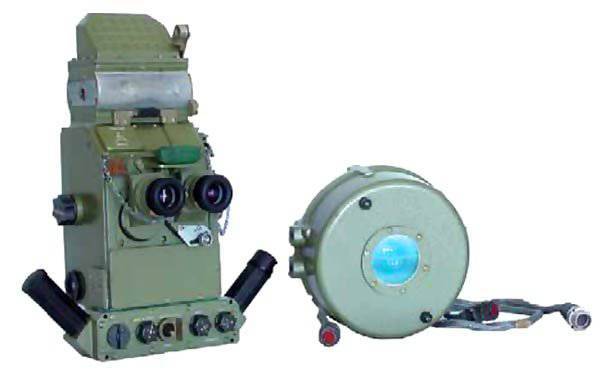

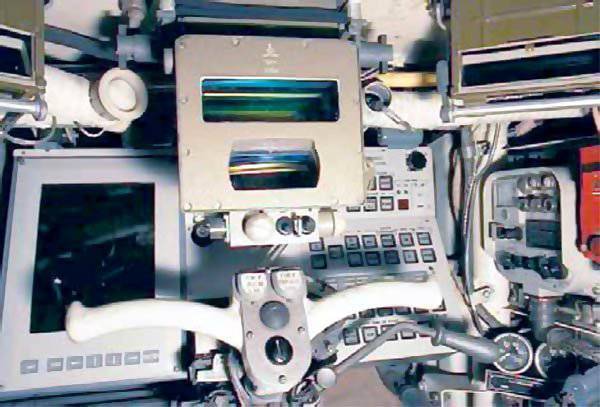
AI NVD, which is based on this method of observation, have significant advantages compared with passive and active electron-optical NVD:
• increased vision range at ultra-low levels of natural night illumination;
• wide dynamic range of working illumination;
• the ability to provide visibility with reduced atmospheric transparency;
• noise immunity when exposed to strong light interference;
• the possibility of observing low-contrast objects;
• opening of masked objects;
• accurate measurement of the distance to the object of observation with a high degree of reliability;
• possibility of detecting optical and optoelectronic devices (ECO) surveillance;
• the ability to work in single-frame mode with ultra-small exposures.
TKN-AI is a combined day / night surveillance device for the commander of the BTT with improved technical and operational characteristics.
The night channel operates in a passive and active-pulse mode with a target illuminated by a semiconductor laser, which makes it possible to measure the distance to the target. The device is unified in size and footing with a serial product TKN-3M.
Created for:
• observation, orienteering, targeting in daytime conditions;
• determine the distance to the target on the grid during the day;
• observation, orientation on the terrain, target designation at night, detection of optical electronic devices at night;
• measuring the distance to the target at night.
The periscopic device with 5-fold magnification is completely unified in size and footprints with the TKN-3, TKN-3М, TKN-3МК devices. The device has an EOP 2 +, a laser illuminator in the dimensions of the standard illuminator OU-3 is used as a backlight.
The optical channel in the field of view has a goniometric and distance measuring grids, an electron-optical goniometric grid and a five-digit digital indicator with a display of the enabled mode of operation and the distance to the target in meters with an accuracy of 20 m.
In addition to the passive and active modes of operation, the electron-optical channel has a passive anti-interference mode (for operation at dusk and with the appearance of continuous light interference) and an active-impulse mode, which allows to increase the operating range by two times, detects optical-electronic devices at a range up to 3000 m and provides selective observation in the area of laser illumination of targets with the determination of the distance to them. This mode is especially effective when observed in dust, smoke or fog conditions.
A wide dynamic range of working illumination is achieved due to the possibility of working in passive, active-pulse and passive-pulse modes. In the passive-pulse mode, a high level of illumination on the ground is attenuated by a number of times equal to the duty cycle of the device's image tube. The transition from a purely passive to a passive-pulsed mode allows for almost round-the-clock monitoring. These devices include the all-daily device for driving armored vehicles TVK-1.
The combined day-night devices of the driver of the TVK series are intended to replace the regular separate day and night devices of the driver on the armor of Russian-made equipment. The concept of a single day / night instrument provides the following operational benefits:
• a violation of the tightness of the instrument and the machine as a whole when changing the day / night modes is eliminated;
• no stopping of the car is required, the car and the crew are not at risk when changing the day / night modes;
• No space is required to accommodate unused instruments and suspension components.
The design protected by a certificate for a utility model combines in a single module a traditional prismatic daytime device and a passive night device with the same dimensions as a separate standard night device, providing the following features:
• replacement of a damaged head prism is made without tools and does not violate the tightness of the device;
• observation in the day and night channels is made from a single comfort zone without additional adjustment of the driver's seat;
• DAY-NIGHT channels are switched by turning the knob;
• observation is carried out with both eyes at an arbitrary position of the head, without fixation by the forehead, within the habitable zone of the driver;
• separate control of the input and output window heating;
• The night channel has an extended operating light range up to 10000 lux with automatic brightness control, and high immunity to light interference. The devices are installed on the seats of the standard driver's devices. It is possible to install head prisms of other sizes and periscopicity, determined by a specific type of armored vehicles. For the water in the TKK-1 device, a high-periscopic head prism (periscope) is used, which is installed instead of the usual instrument head prism.
The devices are developed on the basis of 2 + (3) generation image intensifier with uniform resolution across the field of view.
The devices of the TVK series do not have domestic analogues, have high tactical and technical characteristics and unique properties. Noise-protected (passive-pulse) operation mode ensures the nighttime channel operation of the device in case of increased illumination of the terrain, as well as when light noise appears in the field of view (bonfire flame, headlights of oncoming vehicles, etc.). The transition from passive mode to noise immunity occurs automatically. Collaboration with leading manufacturers of infantry fighting vehicles and tanks provided the device with a convenient design in operation, confirmed by sea trials.
"ANTISNIPER"
In the period of the famous Chechen events of the middle of 90, the issue of fighting sniper groups became especially urgent. The Ministry of Defense set the task of creating an instrument capable of detecting, with a high degree of probability, a sniper disguised in the folds of a terrain, working in the windows of buildings and other shelters.

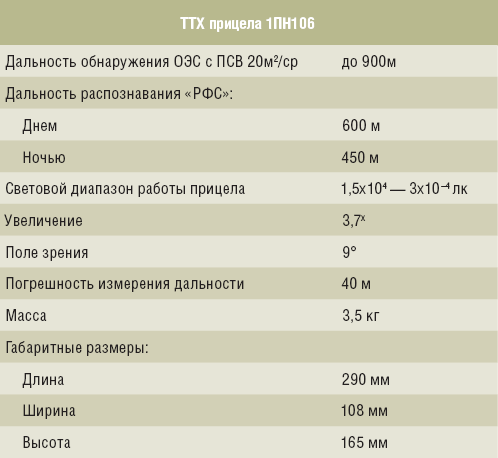
In 2001, specialists of FSUE Central Design Bureau Tochpribor conducted studies on the possibility of obtaining a flickering glare from an optoelectronic device during non-synchronous operation of a pulsed laser emitter and electron-optical converters in the gating mode at close (multiple) frequencies resulting from periodic coincidence of pulses. As a result of the research, the principle of operation of the new device was determined - the laser location (illumination) of the terrain and the processing of the returned reflected infrared radiation from the enemy's optical-electronic device, converting it with the aid of the image intensifier into a visible image of a flickering glare. Special antisniper sights of the 1PN106 series for the SVD, SV-98, PKMN, SVDK, ASVK successfully passed state tests. In the ground tests, a regular sniper for 1 minute found all 5 disguised positions of snipers located at various distances and in various shelters, including the glass windows of buildings. The condition for the appearance of a bright flickering flare is the direction of the field of view of the sniper scope on the Antisniper sight.
KAYMA - NEW QUALITY OF NVD
Conducting combined-arms combat is accompanied by the appearance of bright light sources — flashes from exploding ammunition, light of lighting flares, fire flames and own shots, etc., which leads to the appearance of highlights and even complete collapse of the image in night vision devices. In addition, the unauthorized activation of night vision devices during the day or pointing the device for a long time at bright light sources often leads to burning of the photocathode of the image intensifier tube. The use of the EDT “Kaim” both in new developments of night vision devices and in the restoration and modernization of existing samples eliminates such shortcomings and will undoubtedly raise the instruments to a new qualitative level. In addition, the main prospects for increasing the information capacity of night vision devices with image intensifier are associated with electronic and computer image processing created by image intensifier, which increases the information content in 1,5 – 2 times, as well as with the integration of an optical-electronic channel based on image intensifier (0,4 – 1,1 μm) with a thermal imaging channel (3 – 5, 8 – 14 µm) in the next generation of multispectral NVDs, creating integrated high-tech systems.

NEWS ON "refinery"
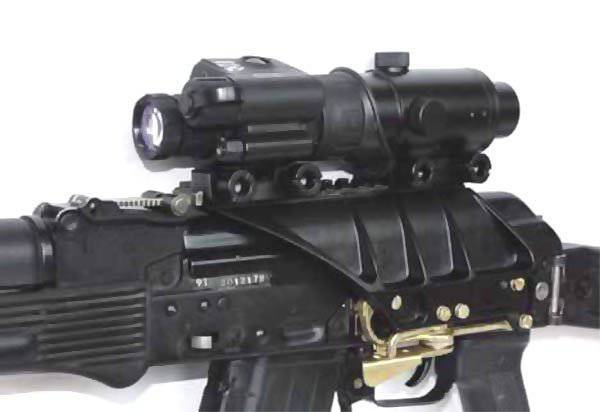
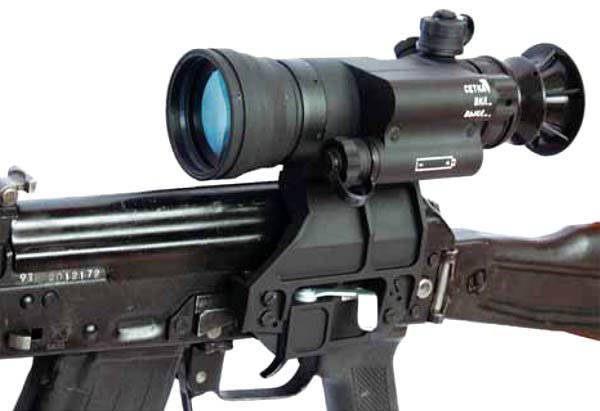
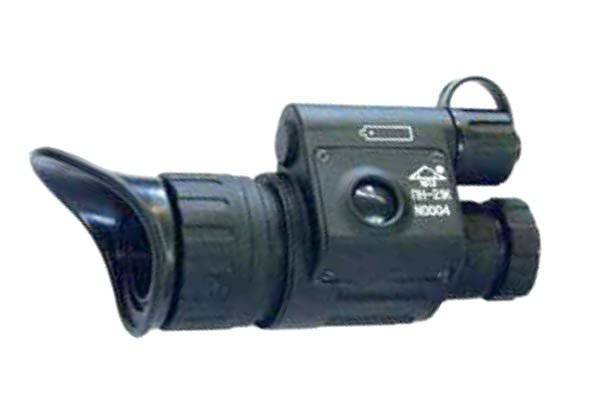
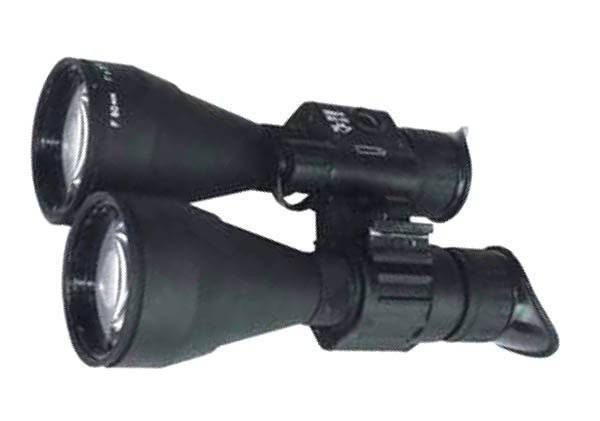
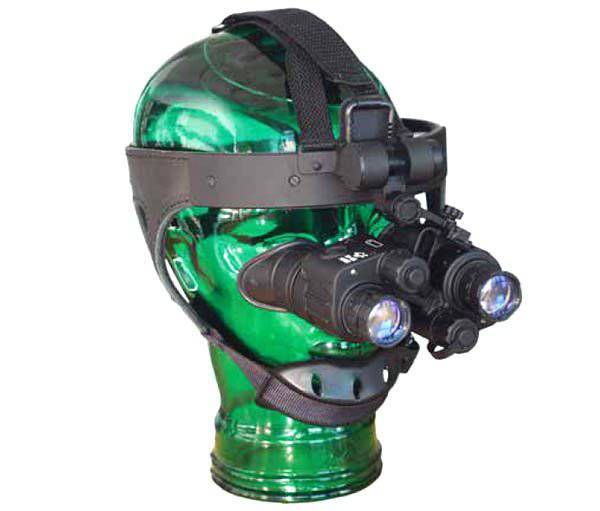
The advanced military-technical countries of the West (USA, France, Germany, Israel, etc.) develop concepts of the image of a modern fighter. Similar developments are given in Russia. With some diversity in the equipment of fighters from different countries, the main directions in the part of instrumentation equipment are: increasing the range of action, reducing overall weight and weight characteristics, versatility, integration into the control system. Taking into account these requirements, according to the specifications of the FSUE “TsKB” Tochpribor ”plant and“ CEA ”LLC, a small-sized night sight for Saracin small arms, a universal night vision monocular PN21K, a day-night sighting system for small arms“ Tandem ”, a thermal sight modular design "Universal", laser rangefinder with ballistic computer and satellite navigation unit GPS / GLONASS "Strelets" and a number of others.
The “Saracen” sight with the 3 generation EOP differs from the analog (1PN93-1) by a significant reduction in weight (680 g versus 850 g), dimensions, one and a half times greater target detection range and twice the angle of the field of view due to aspherical optics, smaller dimensions of the tube, and optimization of the hull design.
The main idea in creating the PN21K night vision monocular is its universalism. Monocular is designed for observation, movement on the ground, driving vehicles, reading maps, repairing equipment, complete with an infrared target designator for pointing the weapon at the target, complete with day or collimator sight for aiming at night. The monocular can be mounted on a headband (hard hat). A special mount allows the monocular to move from one eye to the other, adjusting the individual installation of the monocular relative to the eye of the observer. With the help of the transition bracket, two monoculars are assembled into a binocular 1x or 3x for a few seconds. With the help of the transitional bracket, the monocular is mounted on the Weaver slat of the weapon and together with a day or collimator sight forms a night sight.
To ensure accurate sniper shooting, prototypes of the LDM-2ВК Strelets rangefinder have been manufactured. The range finder provides an automated calculation of corrections for firing, taking into account corrections for target range, target elevation angle, wind direction and force, pressure and ambient temperature, weapon caliber, derivation, ballistic bullet ratio, shooting range, temperature and air pressure at the time of adjustment, height of installation of the sight relative to the axis of the bore of the weapon, the temperature of the ammunition. Up to 20 types of ballistic data of weapons and cartridges can be entered into the range finder. The range finder provides input and display of your own coordinates and target coordinates using GPS navigation systems NAVSTAR and GLONASS SNS. The range finder determines the distance to targets located up to 4 km, with an accuracy of 5 m. The weight of the rangefinder 1,2 kg.
Work on the creation of new optoelectronic devices continues. The main directions for their improvement are functioning regardless of the time of day and weather, the presence of interference, the creation of integrated high-tech systems.

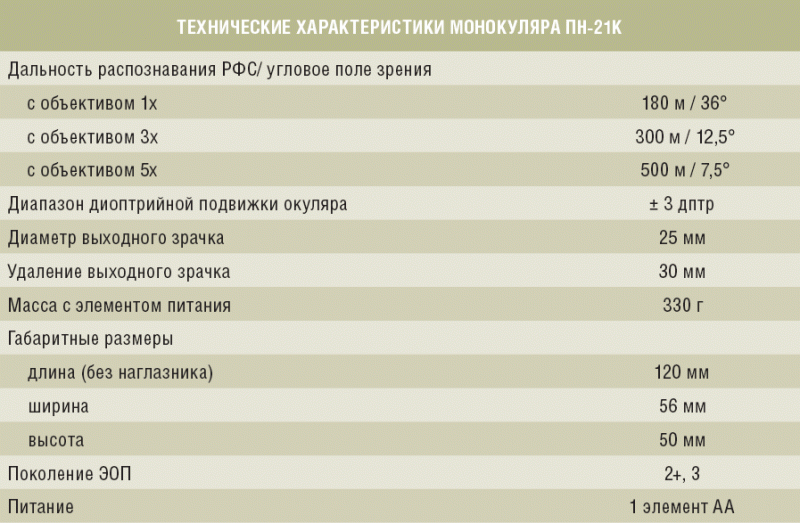
Information